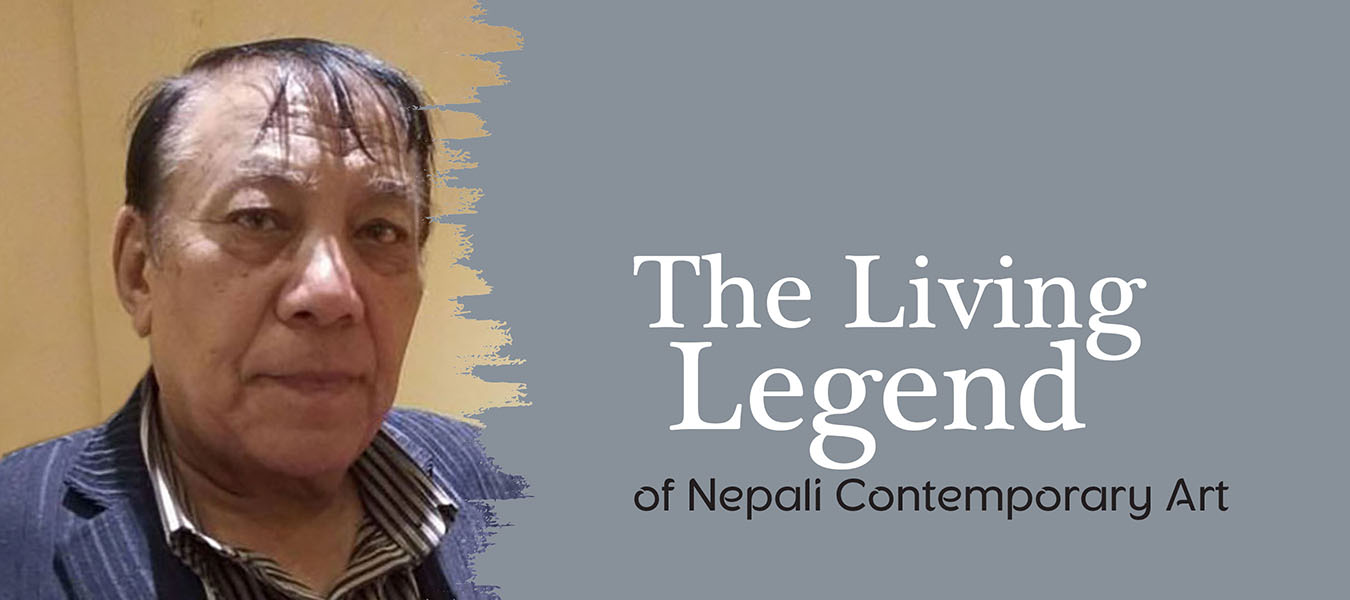Shankar Raj Singh Suwal

To depict the theme of peace and harmony in conflict-ridden contemporary society Shankar Raj Singh Suwal exploits the subject matters of traditional Nepali painting, and Hindu and Buddhist mythologies using surrealist technique. Religious and cultural images are recurrent in his paintings. He reincorporates the images of ancient Nepali architecture and sculpture, and symbolic postures and gestures of gods and goddesses and meditating figures as depicted in traditional Nepali paintings. His works also depict the artist’s quest for freedom and peace in the world where there is social disharmony, exploitation and terrorism.
Using the multiple aspects of Nepali culture, he creates a solid vision of peaceful and glorious Nepal. Patriotism is the central theme, which unites and brings together all the other motifs, symbols and images creating organic whole. However, his canvas does not open all his secrets at first sight. He invites the viewer within his rhythm, and presents us conflicting images, and later guides the viewers to reconcile these images in the imagination.
In his compositions, he juxtaposes contrary images with free association like the surrealist artists.
Shankar Raj Singh Suwal’s compositions first, present the fragmented reality and then attempt to reconnect them. To represent the fragmented reality, the artist breaks the linear surface of the objects using cubist technique. Most of the broken images are created using geometric shapes like squares and rectangles. These broken shapes represent the disorder and fragmented reality. They also suggest the lack of understanding and the failure of communication among people in the context of contemporary Nepali society. Emphasizing the necessity of understanding and communication among people, the artist reconnects the fragmented images using spontaneous and rhythmic curves and lines.
Some works of Suwal reintegrate the figure of meditating Buddha and Shiva at the centre of the canvas and arranges other abstract images around the central figure creating the renewed mandala. The central figure and its surrounding are illuminated with bright light, the symbol of cosmic energy, and the images in periphery are pulled toward the centre by the magnetic energy of the central figure, the Buddha. There are abstract images in the periphery. The artist uses abstract images with purpose, that is, the abstract encompasses all the objects of the universe since they do not refer to the particular things of the world. The artist rereads, revitalizes and rehistoricizes the early forms. Since the significances of the images in the background are multiple, the art form is plural. The art works emphasize that both living beings and the objects of the world exist because of cosmic energy, and the realization of this concept may result in the harmonious and peaceful world.